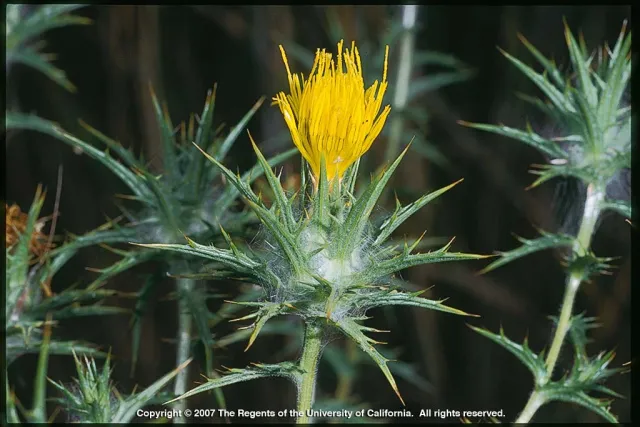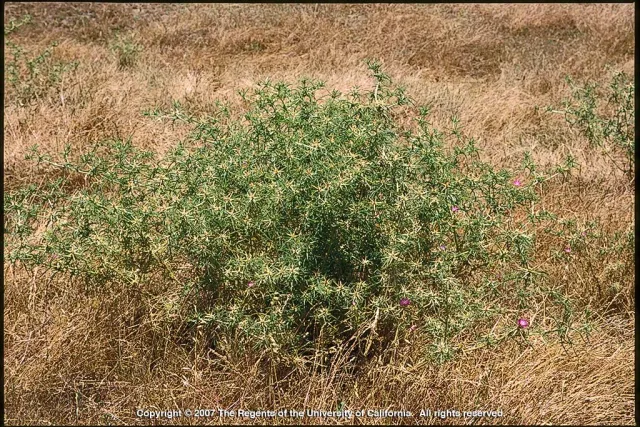
Now is the time to do any last minute control of wooly distaff thistle and purple starthistle, before they go to seed. Most herbicide treatments for these species will not be effective during the summer, so your options are more limited.
Weed Control in Natural Areas in the Western United States is a great book that summarizes research on herbicide and non-herbicide control options for many California rangeland weeds, including wooly distaff thistle and purple starthistle. The control options noted below are from this book.
Wooly distaff thistle
Herbicide control
- Weed Control in Natural Areas in the Western United States has a list of several herbicides that can be used for wooly distaff thistle in late-winter to spring.
Non-herbicide control
- Hoeing: You may consider this approach for smaller patches. Hoeing is recommended when the plant is in the rosette stage or when it is bolting, before the plant begins to flower. If you use this method, they recommend cutting the plant below the surface of the soil, otherwise it will resprout.
- Mowing: Mowing is best in late-spring after the plant has bolted and right before the flower buds develop. If you mow sooner, the plant may regrow. If you mow once there are flowerheads, the seeds will continue to develop even after they are mowed. So, that is not an effective time to mow. They recommend mowing 2-3 times during the season.

Purple starthistle
Herbicide control
- Weed Control in Natural Areas in the Western United States has a list of several herbicides that can be used for purple starthistle in late-winter to spring.
Non-herbicide control
- Hand pulling, grubbing, digging: These methods may be effective for smaller populations and should be done multiple times during the year.
- Mowing: Though mowing won’t kill the plants, if you mow when the plant is in full bloom you can minimize seed production.
Although not listed in Weed Control in Natural Areas in the Western United States, one approach you may want to consider since we are already so late in the season, is to cut flower heads, bag them, and dispose of them. This approach is more practical for a smaller population.
You can also check out WeedCUT (Weed Control User Tool) to explore various weeds and control methods. It even provides an estimate of how effective each control method is.
